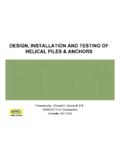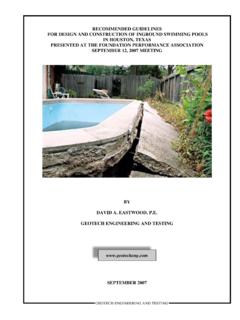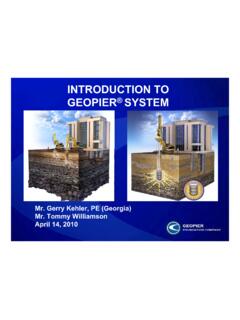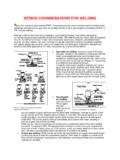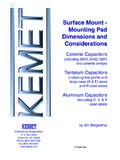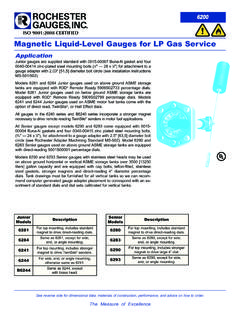Transcription of EST M EVALUATING EXISTING OUNDATIONS by of
1 FPA-SC-02-0 Test Methods for EVALUATING EXISTING Foundations 29 November 2010 Issued for Website Publication Foundation Performance Association - Structural Committee Page 1 of 76 TEST METHODS FOR EVALUATING EXISTING FOUNDATIONS by The Structural Committee of The Foundation Performance Association Houston, Texas Document # FPA-SC-02-0 ISSUE HISTORY (Some internal committee issues omitted) Rev# Date Description Subcommittee Chair Subcommittee Members A 7 November 2007 For Committee Review DD 18 August 2010 For FPA Peer Review GG 3 November 2010 For Committee Review 0 29 November 2010 Issued for Website Publication Al Bustamante Gerard Duhon Denis Hanys Ron Kelm Gerald Lowe Bob Newman Michael Skoller George Wozny Nicole Wylie FPA-SC-02-0 Test Methods for EVALUATING EXISTING Foundations 29 November 2010 Issued for Website Publication Foundation Performance Association - Structural Committee Page 2 of 76 PREFACE This document was written by the Structural
2 Committee of the Foundation Performance Association (FPA) and has subsequently been peer-reviewed, accepted, and issued by the FPA. This document is published as FPA document number FPA-SC-02, Revision 0, (FPA-SC-02-0) and is made freely available to the public at so all may have access to the information. To ensure this document remains as current as possible, it may be periodically reviewed and updated under the same document number but with higher sequential revision numbers. The Structural Committee is a permanent committee of FPA. At the time of writing this document, the Structural Committee was chaired by Ron Kelm and 30 to 35 members were active on the committee.
3 The Structural Committee sanctioned the development of this paper on 25 July 2007 and formed a subcommittee to write the document. The subcommittee's chair and members are listed on the cover sheet of this document and are considered this document's co-authors. Suggestions for improvement of this document shall be directed to the current chair of the Structural Committee. If sufficient comments are received to warrant a revision, the committee will form a new subcommittee to revise this document. If the revised document successfully passes FPA peer review, it will be published on the FPA website, superseding the previous revision.
4 The intended audiences for the use of this document are engineers and others that may be involved in the evaluation of foundations that are located in the southeast region of the state of Texas, and primarily within the City of Houston and the surrounding metropolitan area. However, many of the considerations discussed for each of the test methods for EVALUATING EXISTING foundations also apply to other geographical areas. This document was created with generously donated time in an effort to improve the performance of foundations. The Foundation Performance Association and its members make no warranty, neither expressed nor implied, regarding the accuracy of the information contained herein and will not be liable for any damages, including consequential damages, resulting from the use of this document.
5 Each project should be investigated for its individual characteristics to permit appropriate application of the material contained herein. Please refer to the FPA website at for other information pertaining to this document and other FPA publications. Safety issues associated with the test methods described herein are not addressed in this paper. It is the responsibility of the user of this paper to establish adequate safety and health practices while using the methods described in this paper. It is also the responsibility of the user of this paper to comply with applicable local and federal safety and health regulations.
6 FPA-SC-02-0 Test Methods for EVALUATING EXISTING Foundations 29 November 2010 Issued for Website Publication Foundation Performance Association - Structural Committee Page 3 of 76 TABLE OF CONTENTS DESCRIPTION OF TEST CARPENTER CHAIN CHLORIDE ION CONTENT CONCRETE CONCRETE SCREWDRIVER GROUND PENETRATING RADAR (GPR)..17 GROUND HALF-CELL POTENTIAL (HCP)..21 HAMMER IMPACT INSPECTION OPENINGS AND LASER METAL OPTICAL PETROGRAPHIC PLUMBING LEAK POST-TENSION POST-TENSIONED TENDON SCREWDRIVER REBOUND HAMMER ( SWISS OR SCHMIDT HAMMER).
7 51 REINFORCEMENT LOCATOR (R-METER)..53 ULTRASONIC-PULSE VAPOR FPA-SC-02-0 Test Methods for EVALUATING EXISTING Foundations 29 November 2010 Issued for Website Publication Foundation Performance Association - Structural Committee Page 4 of 76 FOUNDATION CHARACTERISTICS AND CONCRETE DIMENSIONAL CONCRETE CONCRETE MATERIAL NON-PRESTRESSED REINFORCEMENT POST-TENSIONED REINFORCEMENT SOIL OTHER APPENDIX SUMMARY TABLE FPA-SC-02-0 Test Methods for EVALUATING EXISTING Foundations 29 November 2010 Issued for Website Publication Foundation Performance Association - Structural Committee
8 Page 5 of 76 INTRODUCTION Scope The purpose of this document is to provide general guidelines for common types of foundation test methods, based on sound science, used to troubleshoot problems and evaluate the conditions of EXISTING foundations. This document is targeted for engineers and others familiar with the evaluation of EXISTING foundations. This document does not include guidelines for quality control and quality assurance of foundations under construction or foundation repairs. The foundation evaluation methods discussed in this document are primarily intended for lightly loaded concrete foundations and pavements.
9 General Considerations There are general considerations that apply to each test method described in this document. The general consideration categories include cost, portability of testing equipment, user skill level, data processing, invasiveness, qualitative/quantitative type of method, and others. Cost considerations for the test methods are based on the relative cost of rental or purchase of equipment, or engagement of contractor/professional services. The costs are quantified relatively into a range of five categories from least to most expensive using the following symbols: Least Expensive Most Expensive $ $$ $$$ $$$$ $$$$$ In addition to the general considerations that apply to each test method described later in this document, there are other items to consider, which include the following: 1.
10 Verification of test results, which could include core sampling, drilling, use of different test methods for comparison, and others, is required to calibrate the results obtained from the test methods. 2. The test methods that require the use of proprietary equipment should be calibrated and performed following the equipment manufacturer s written instructions. 3. Instruments suspected of inaccurate measurements should be serviced by qualified technicians. 4. The list of additional resources under each test method is not intended to be all inclusive. The test methods described in Section 2 of this paper are listed in a table included in Appendix A.
